Manitou Dorado - Reviewed
What's on the outside?
Out of the box and into my hands, my first thought was not how light it is (although it is relatively light), or even how quickly I could manage to get it on my current test bike, but instead how nicely it was finished. The made in the U.S.A. fork is just beautiful. As you would expect, the carbon legs are stunning with the cosmetic weave easy to see. My heart always beats a few beats faster when I am holding anything made of the black wonder material. Carbon has its detractors, but it is hard to argue that it doesn't look stunning. The upper tubes bulge slightly at the lower crown and continue down at the same diameter. The upper and lower crowns each clamp onto anodized gold aluminum sleeves that have been bonded to the carbon tubes, increasing clamp diameter and protecting the carbon at the same time.
The crowns look up to the task, the lower crown itself is massive. Tolerances seem to be just right, as in you don't need a hammer to get your top crown on and in position. The top crown fits an integrated stem and uses the same standard that you will find on Boxxers or Fox 40s. All crown pinch bolts are drilled A270 rust resistant bolts, details. There is a smart hose guide on the lower crown which uses a single 2.5 mm allen bolt, nice to see they didn't decide to use anything smaller like some other rather cheesy hose guides. The aluminum steerer tube is butted as well.
The decals themselves are a step above what we usually see in the bicycle industry. The thick vinyl graphics don't look like they will be separating themselves from the legs anytime soon, which is nice because I think they look pretty damn sharp. It is great to see the MRD (Manitou Racing Development) logo make a return to the range, signifying that this fork sits at the top of the fork hierarchy.
The stanchions are 36 mm across and are protected via sturdy plastic guards. The original Dorado leg guards were quite brittle, having a tendency to crack before bending. These are thick and flexible so they should last much longer. They also have aluminum sleeves in each bolt hole to prevent cracking due to over tightening or an accident. Three 2.5 mm bolts hold each guard in its place and the left has a built in hose guide.
The Dorado accepts standard 20 mm x 110 mm thru-axle hubs and uses Manitou's 6 sided HexLock axle system. Two pinch bolts per side hold the axle in place, and they thread into replaceable steel inserts that prevent any permanent damage from over tightening. The fork uses a modular brake adapter and comes with both 8" post mount and I.S. mount.
What's on the inside?
I got a chance to pull apart the Dorado with one of Manitou's head guys, Nick Pyne, so I couldn't turn it down. Nick knows his stuff really well, and when he sunk his teeth into the Dorado it was evident that not only did they invest a lot of money, effort, and time into the design and construction of the Dorado, but it was worth the extra money. Over the years we've been sold some pretty hokey fork internals, most of us without really knowing. A lot of riders would be surprised to find that their fork that was top of the range only a few seasons back actually uses technology taken from moto forks built in the '70's and '80's. The Dorado internals are about as far from that as you could get. Inside you'll find nothing but cnc'd aluminum bits, most anodized for long term durability, no unfinished edges or any sacrifice in quality to be seen. All the parts are constructed out of durable materials to ensure each tear down and rebuild does not leave your fork feeling worse than before.
All the words Nick threw out sound technical, and the diagrams look good, but the Dorado is best understood once you get inside. The damping assembly is designed, and laid out perfectly. As it's an inverted fork Mantiou has put the damping assembly at the bottom of the leg, meaning whenever you're riding the oil is keeping the items lubricated that need it the most. The rebound assembly fits directly into the damper, which is housed inside a closed bath system. This closed bath system includes the complete TPC+ assembly, rebound assembly, and hydraulic bottom out assembly, all neatly tied up and sealed inside this unit.
On the opposite side of the fork is the self equalizing air spring system. This system was simpler compared to the damping assembly, but still shouted quality engineering. Once inside the air spring leg it was fairly obviously what each component did. It consisted of one large air chamber, one piston, and a few odd looking parts that once they were explained looked very functional. At the top of this leg is the Air input valve, and you guessed it, that's where you air up your spring. Clearly stated on the cap is the recommended settings for air pressure, and a warning to not remove air from this valve. Should you need to remove air, you'll have to do so via the lower air valve at the bottom of the leg. Remember, the Dorado features self equalizing air chambers for positive and negative.
As you can clearly see on the air spring is a nut, and a rubber stopper. These are both 2 completely functional features about the fork, the top out bumper, and the travel adjustment. Stuck on the end of the air piston is what's referred to as a poppet valve. This valve is what equalizes the pressure between the positive, and negative chamber, a pretty helpful little unit. All wrapped in a thick rubber seal to keep the pressure in the right areas, and sealed in a leg. That is what the air spring leg consists of.
All these fancy components and parts to the Dorado would be completely useless if they were not correctly protected, and sealed. All housed inside dual layered carbon legs and protected by not 1, not 2, but 3 seals insures the Dorado's internals are well protected from the elements that be. All the external adjustments are well labeled and are noticeable right away once used. The Dorado is a really well thought out, and well constructed fork worthy of the investment.
Manitou is really leading the way in appearance and aesthetic with the carbon legged Dorado. As we already covered, the finish and attention to detail is more than unrivaled by any other manufacturer. For those riders who are paying top dollar for this top piece of kit it is going to need to do a whole lot more than simply look pretty in the garage. In short, it has to work better. There are those who will happily hand over their hard-earned money for the Dorado, oblivious and uncaring as to whether there really is a performance gap between it and the less expensive competition. But that is not where the new fork (and the reborn Manitou name) will earn it's reputation. Pro and expert level riders who push hard and know exactly what is happening under them while up to speed, riders who take the time to shape their suspension into something that can and will help their cause on the trail, those who know that there is an advantage to be had, those are the people who should have a go on this fork. After only the first few rides it was painfully clear that it really was working better.
The impressive thing about the Dorado is how it manages to deal with it all quite easily, never feeling like it is working overly hard to move the front wheel out of the way. The initial entry into it's travel is not as supple as some would hope, although that is of zero consequence when on the dirt. The Dorado always garnered attention at the trail heads and I could only smile and nod when another rider gave it a push in the lot and declared it "nothing special", I mean there really is nothing to say to that and I can't go lending the bike out to every rider now can I. Get rolling with some proper terrain passing under you and that is when you will realize that yes, something special is happening.
That silky smooth top end that seemed to be lacking while at a standstill obviously has nothing to do with riding the fork in real time, as the smallest irregularities on the ground were simply erased from below me. I'm talking about the things that we don't see when riding above our limits and looking far ahead, those little things that make you back back up the trail to see what it was that was giving you so much trouble. How the fork deals so well with the smaller issues I don't know, but it passes nearly none of it up and into the bars, even more importantly, it seems to greatly reduce the amplitude of the these nuisance bits of any trail before they reach your tires. A lot of beating around the bush when what I am trying to say is that the end result is greater traction. Then again, that is what suspension is there for, now isn't it? This is simply what happens when that very suspension is working very, very well at its job. It is easy to argue that another brand's fork could be set up to accomplish the same thing, and that's true, but that fork would then be lacking in other departments and at the very least require a skilled and knowledgeable tuner to do multiple rebuilds and tinker with things that most of us don't know how to tinker with. Out of the box (or gun case as it may be) the Dorado has no peers in this category, but gives up no ground at any other point in it's travel as well.
Past the smaller bothers and into it's travel, the fork never complained. It seems to me that there are certain forks out there that are guilty of not being able to properly transition deeper into their stroke without over reacting. Why would I want to use all my travel when I should only be using part of it? Now that we seem to have settled on 8" up front there is a lot of room to get things wrong, much more than on a shorter stroke AM bike, using too much of that travel too often can have disastrous effects on your bike's handling and it isn't helped by having that much or more travel in the back of the bike. The Dorado is not plagued by this common problem. Hard braking did far less to upset the bikes geometry than what I was used to. The anodized red low-speed compression (LSC) dial had a noticeable effect in keeping the bike from diving, but at the same time the fork was never harsh, even with the LSC fully closed. When LSC was at full open it was still more controlled than the competition, although I would still like to see an even wider range of adjustment available externally.
Up to speed and the fork is fully in control of what is going on. It took some time to realize that the Dorado really was working hard at it's job, mainly because it went about dealing with the common lumps and edges that are on all our trails so well. The fork's mid-stroke was practically erasing whatever it was that was under me. No spikes and no surprises, leaving me to concentrate on getting down the trail. This took the longest to understand. I don't want to describe the feeling as vague, because it was far from it, but it really muted a lot of terrain that would have had me tensing up. Stay relaxed and let the suspension deal with it as it does. What more could you really ask for?
The hydraulic bottoming cone does what one would hope. Not once, despite some impressive mistakes, was I able to really close down hard at the end of the stroke. Full travel was used, but by the time I managed to get there it was far more of a soft bottom than a hard finish. It's a wonder why other forks don't take advantage of this system, although I'm sure they'd give you a reason why. Manitou uses a similar arrangement to control the opposite end of the stroke and it proved just as useful there as well. I have read a few complaints of some minor topping out of early production run Dorados that were shipped without this top out cone, but I've been told that every fork now has this system installed. I want to make the next statement as clear as possible: the Dorado is not flexible and I would argue that what resiliency is there is helping and not a hindrance. Not at any point during my time on the fork did I wish for it to be any stiffer torsionally. End of story.
There are forks available that come very close to matching the Dorado in certain areas of detail, but there is not a single fork that is as polished all around as the carbon tubed Manitou, it inspires confidence in every situation. The entire stroke is nothing but quality, there really is no compromising at any point in the travel. No giving up one trait to gain another and certainly no awkward moments that make you wonder what just happened. You get to have your cake and eat it as well. Although it's one expensive cake.
The seals that Manitou chose to use on the Dorado seem to be up to the task and then some. While only a few months time is hardly enough to report any long term verdicts, they let nary a drop of oil by. Zero. Zilch. Hell, there wasn't even the slightest wisp of oil left on the lower tube after any compression. I have high hopes that they will perform as well further into the future.
Having had many seasons on the old Dorado and going through too many stanchion guards to remember, I can happily report that won't be the case with the new version. The guards are thick and flexible, with aluminum inserts at the screw holes to keep the fastening bolts from pulling through. Not one was broken during the test and I doubt it is going to happen anytime soon.
One point of contention was discovered after the Dorado equipped test bike was left to sit unused for a few weeks. It was evident that the fork was not at its best after the long break, not the least bit eager to enter its travel. Everything was back to normal after a quick burn or two, but it may be important to store the bike upside down when not used for extended periods.
So what do I really think?
The truth is that no matter how good the Dorado is, and it really is that good, there will be those that will find fault with it. Let's be honest here, it could be easy to find something to pick out: it's carbon and no matter how much proof is out there or how well it is made you are sure that you will snap it in two simply by loading it onto your bike rack! And of course it's inverted and you simply will not be able to ride down your local hill without the front wheel pointing off in the wrong direction! Oh yeah, it's holy-shit expensive and you... Ok, I'll give you that one as I'll never be able to afford it either! But wait, the new aluminum legged version sporting the same amazing internals could be just the ticket for us bike bums. I'll be truthful, when bits of info and pictures of the new Dorado were first made available I immediately balked at the prospect of the new fork. Even though I'd had plenty of great experiences with TPC+ damping in both the original Dorado, and later a much loved 7" Travis, I still was not sold on the new fork as a whole. At a much greater price than some of the competition, as well as a much flashier appearance, I almost wanted it to not live up to the expectations. That is obviously not the case. As much as I would like to find fault with the Dorado, speaking strictly about the fork's performance, I simply can't. Pretty much every suspension company out there manages to produce a full fledged DH fork that will never hold most of us back, none of the other top forks are exactly dogs, but with the Dorado on the front of my bike I had more confidence than ever before and that says a lot. At the end of it you can find all the faults you like, the reality is that this is the highest performing no-compromise DH fork available to consumers out of the box.
Mike "Kakah" Levy
Author Info:
Must Read This Week
Sign Up for the Pinkbike Newsletter - All the Biggest, Most Interesting Stories in your Inbox
PB Newsletter Signup

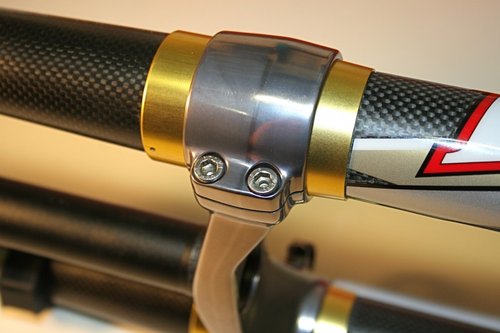
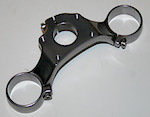


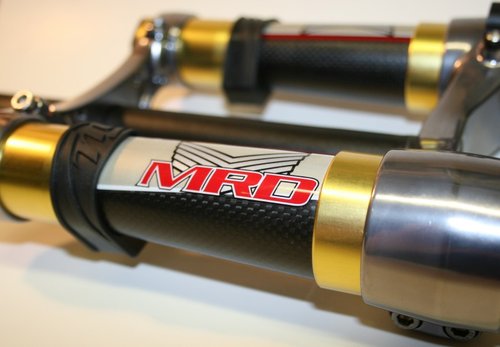

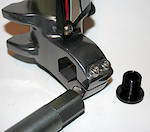
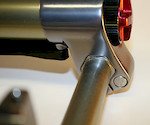
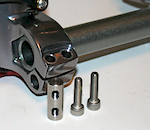


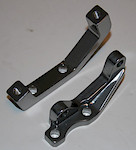

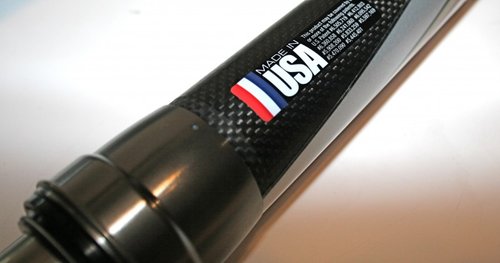
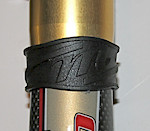
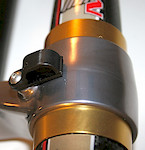


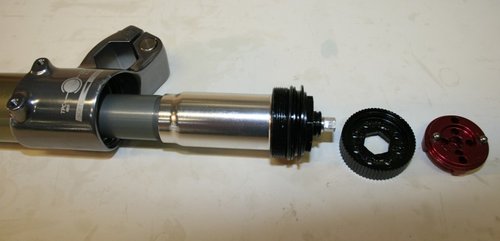







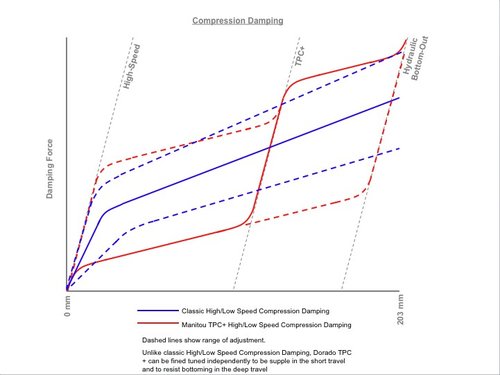

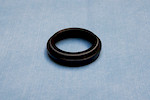


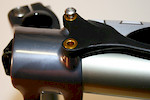
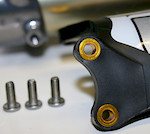

More pics here:
http://www.sicklines.com/2009/03/19/2wheel-freaks-team/
http://2wheelfreaks.ning.com/page/team-blog
Cecil
lol
Plus, they didn't even mention that you get 4 free factory services from Manitou on the Dorado Carbon, over a 2 year period. They are really backing this product up. This fork is for the high end gucci racer guy.
As for graphics, they are thick decals, if you don't like them, peel them off. It is a race fork, so they made it look like a race fork. It still looks a damn sight better looking than the stuff Marz put out the last couple of years.
disk brakes?
hydro disk brakes?
vertical master cylinder disk brakes?
floating brake calipers?
progressive suspension design?
and upside-down forks.
All were used by motobikes long before us bicyclers began using them.
and for how long have the dirt bikes been utilizing the upside down forks? i recall seeing them since 2000, but may have been earlier as well.
I really think that the dorado will be the way to go, you get less un-sprung weight with better small bump compliance.
If other companies would just cut the crap and start making top-end forks like this, they wouldn't need to re-release product line-ups every year making everyone want to buy the latest stuff as they would be at the pinnacle of performance already, the price on these forks is actually well justified, the tech won't get old for years to come while other people will keep buying the latest 40 or Boxxer every year and still have inferior performance, and end up paying much more in the long run!
with that said i still think that fox is the way to go as far as suspension goes. fox knows what they are doing. im sure they got something up there sleeve if the need to improve the 40 to be on top of the market again. they just came out with a dhx rc4 rear shock. i think we may be seeing a new dh fork from them sometime soon in the near future!